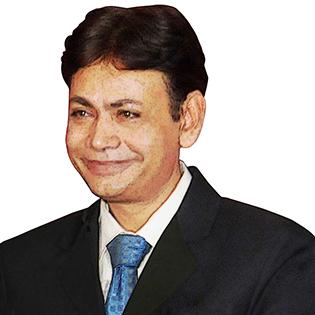
1. What all technologies do your organization leverage to deliver service to your customers?
We leverage bunch of technologies to deliver IT solution to customers. This includes SMS solutions, GPS solutions BI, mobility, SOA, and more. Microsoft business intelligence solution is used by our ERP product for generating dashboard for service calls, machine status, lost sales analysis, forecast parts sales using time series algorithm, and forecasting machine sales using time series algorithm.
We use GPS device for construction machines to track the location, get status (running or idle) and read HMR (Hour Meter Reading). Each GPS device is equipped with GPS module, GSM module, Analog port and embedded system. And each GPS device has its own unique identity which is mapped with the machine identity. Device reads the longitude and altitude from GPS module and Analog signal from connected Analog cables and transmits the information in a pre-defined format to the server on a given frequency using SIM card via GSM module.
2. What mobility solutions are you currently using and to what benefits?
We use following mobility solutions: Android application, mobile compatible website and interactive SMS solutions. Android application has been created for service engineers, customers and surveyors to help them to access service manuals, contract document etc & enter the service report offline when they are on field. And then synchronize the data with the server gets connected to the net.
Mobile compatible websites are created for important information on our ERP product, so that user can access important information and take action while on move. Similarly SMS interface is created for urgent alerts and escalations as well as for interactive SMS such as registration of the complains or getting status of the complaint, etc.
3. What are some of the technology challenges that you face today?
We face challenges of obsolesce and compatibility issues with the technology. If something is developed today, it may become obsolete and non-compatible within 2 to 3 years. Therefore 20 to 30 percentages of our efforts goes in technology upgrade and technology migration.
4. What are some of the best practices that you would like to share with our readers in terms of leveraging technology?
New tools and technology are getting developed day by day. To leverage the technology we must follow some dos and don’ts as given below.
- Identify the pain points first
- Identify what solution are we looking to address pain points
- Research the technologies available to help in getting solution
- Create POC (Proof of Concept) to know if it really delivers what we are looking for
- Short list the approach and technology mix going to be used
- Use shorter Implementation cycle. It should not go beyond 6 months, if more, break into multiple phases. Bigger cycle mean bigger chances of failure and obsolesce.
- Do not go behind fat architecture or buzzword , it’s always good to be slim
- Do not go by hype or brand name , instead look for creative solution
- Do not create too futuristic solution, because technology is so fast whatever best you create, will need overhaul within 3 years
5. What are your tech expectations and what innovation do you want to see in your domain to be able to meet customers' needs?
In coming days we are expecting a big role of machine to machine (M2M) communication to automate the processes. Innovation is our constant endeavor. We keep on evaluating new tools and technology and decide if it can add value to the customer. Our focus is to leverage new tools and technologies to make things simple, interactive and that can automate the process.

 In
In
Add new comment